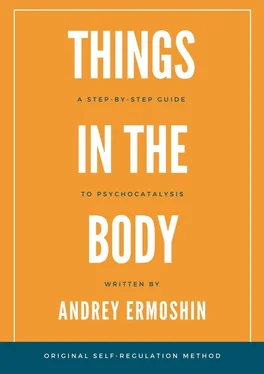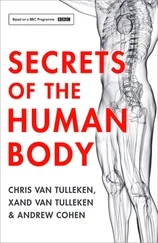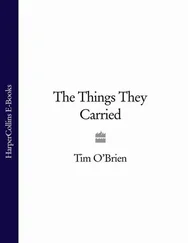This method also draws from the intensive and short-term schools. It is good for working through traumas. However, it is as thorough as the therapies of the first «classic’ group.
1500 patients
From my point of view, this study takes into consideration the most important issues of psychotherapy.
How to bring the patients to an understanding of their inner state?
How to change that inner state for better?
How to get a sustainable result?
After 15 years of research, this method has been formed by the process of solving psychological and psychosomatic problems of more than 1500 people during 3—5 sessions of one hour with each of them.
Every psychotherapist and practicing psychologist know about patients’ descriptions of their bodily sensations. There is no more or less noticeable experience that would not be accompanied by a burning of the chest, or a pain in the head, or compression in the abdomen.
Different attitude to the body sensations
In classical medicine, the body sensations are taken into account to clarify the diagnosis and monitor the dynamics.
Clinical psychotherapy calls them vegetative accompaniments of experiences.
In psychoanalysis, they serve as a material for the interpretation and construction of structures, where through somatic symptoms «the body reports the dominant idea of the «subconscious’. The subject of the searches is the idea underlying the formation of the symptom.
In the context of Jungian’s approach, there can also be situations in which patients indicate body sensations in the process of experiencing certain archetypal scenes, but these feelings rarely fall into the focus of attention. More importance is given to the semantic elaboration of the symbols.
Gestalt therapy pays more attention to body sensations to establish contact with them, to find out their «addressee’, if any, and to complete the unfinished deal associated with them.
Psychosynthesis does not exclude the use of body parts to establish mutually beneficial contact between them. In this case heart, brain, stomach, ears, personified as subpersonalities, can sort out their relationship, but this process does not have the nature of direct work with sensations.
Reichian body-oriented psychotherapy attaches great importance to the analysis of the «rings’ of tension at the level of the eyes, mouth, neck, chest, abdomen, pelvis, forming a «protective shell’ around the body, delaying the free flow of «bioenergy’, and considers its important task to work through the «muscle armor’. However, this approach works primarily with the surface of the body.
Erickson hypnotherapists use descriptions of body sensations to create a background of reliability in the process of «soft trance guidance’. Bodily sensations in this tradition are highly valued for their credibility. With their help, hypnotherapists often receive from their clients, a credit of trust, which a person is inclined to give to someone who has correctly described at least three components of his bodily experiences. An erickson hypnotist describes what a person feels with their body but… thinks about something else.
Here’s how body sensations are characterized from the point of view of neuro-linguistic programming: «Evaluative meta-feelings about other perceptions or representations, also called emotions, feelings, or visceral kinesthetic, which are presented in the chest and/or abdomen, or in the midline of the body. These feelings are not direct sensations/perceptions, but representations derived from other sensations/perceptions. 2 2 A quote from the book.: Transformation personality: neuro-linguistic programming. Odessa: Hadzhibey, 1995, p. 260.
" «Other sensations/perceptions» – specifically visual, auditory and kinesthetic – are the main focus of attention in NLP.
The ontopsychology of Menegetti attaches great importance to the knowledge of the doctor’s own body sensations in the process of communication with the patient and the study of «semantic field’. However, in this case the appeal to the sensations is of an official nature.
The process-oriented psychotherapy of A. Mindell touches the sensations in the prosses of working with the «channels of perception’.
There are many reports of body sensations during sessions of holotropic breathing according to the methodology of S. Grof.
We can say that every serious school of psychotherapy somehow reacts to the fact of the presence of body sensations brought about from experiences, but almost none of the existing schools work directly with them, thus remaining within the indirect use of this phenomenon. I would like to name the way it is done as external .
Psychocatalysis of body sensations works with sensations directly , «internally’ using them.
Traditional Russian attitude to body sensations
As real force that significantly affects the health of our fellow citizens, this tradition does not exist. The interests of the social experiment, which our country went through, demanded special personal qualities from its participants. The inclination to introspection was not listed among them. Moreover, its manifestations were considered almost counter-revolutionary. “The battles for the harvest’ and other “battles’ for agriculture, industry and other fronts did not include any study of body sensations. That era put forward its heroes. However, their valor was not intended to be healthy for, but rather, to be useful to society.
One of my colleagues told me a story about a group of American feminists who arrived in Moscow during the perestroika period. Instead of giving a long explanation, I will just say that she invited them to a public bathhouse… When the feminists saw the women around them, they began to cry. They could vividly imagine how those Russian women must have mistreated themselves to end up with such deformed bodies. The Americans ladies were particularly shocked by the extent of their distorted joints.
I would like to mention something about the souls of the long-suffering Russian women! Indeed, no matter what, they are distinguished by their commitment to compassion and sacrifice. It would have been necessary to have a remarkable strength of character to withstand everything that our parents and grandparents had to endure. Though, it would have been prudent to add a culture of personal care and self-preservation to such character and experience of suffering; a culture of working through the consequences of the resentment experienced.
I hope that my scientific work will contribute to the formation of such culture.
Domestic “tradition’
This is an example of attitude to oneself, and to the signals of the body, at the household level. Fortunately, this does not mean that in “the domestic’ tradition there is no other attitude to the perceived.
The Orthodox Church, especially the Byzantine monastic tradition of Hesychasm (sacred silence), which was developed in the environment of Russian monasticism, offered to be very attentive to what was formed in the mind of a believer.
I was greatly impressed by the topographic structure of the descriptions of «mind preservation’ by the Christian ascetics. Long before the emergence of any psychotherapy, they described the phases of entering into a passionate state and their ways out of dead-end experiences. Those experiences often resembled plants and animals.
We know such expressions as «seeds’ or «roots’ of passion. In the V century the monk Neil of Sinai wrote about «the foxes that live in the soul of the vindictive, and the animals that hide in the indignant heart’ or «as the water is perturbed by a falling stone, so the heart of a man by a bad word.» «As the smoke from smoldering straw bothers the eyes, so the rancor bothers the mind during the prayer’ 3 3 Dobrotolubie, vol. 2, – Holy Trinity Sergius Lavra, 1992, p. 250
. These descriptions are more than just beautiful literary images, they are documentary evidence of the experience of internal work.
Читать дальше












